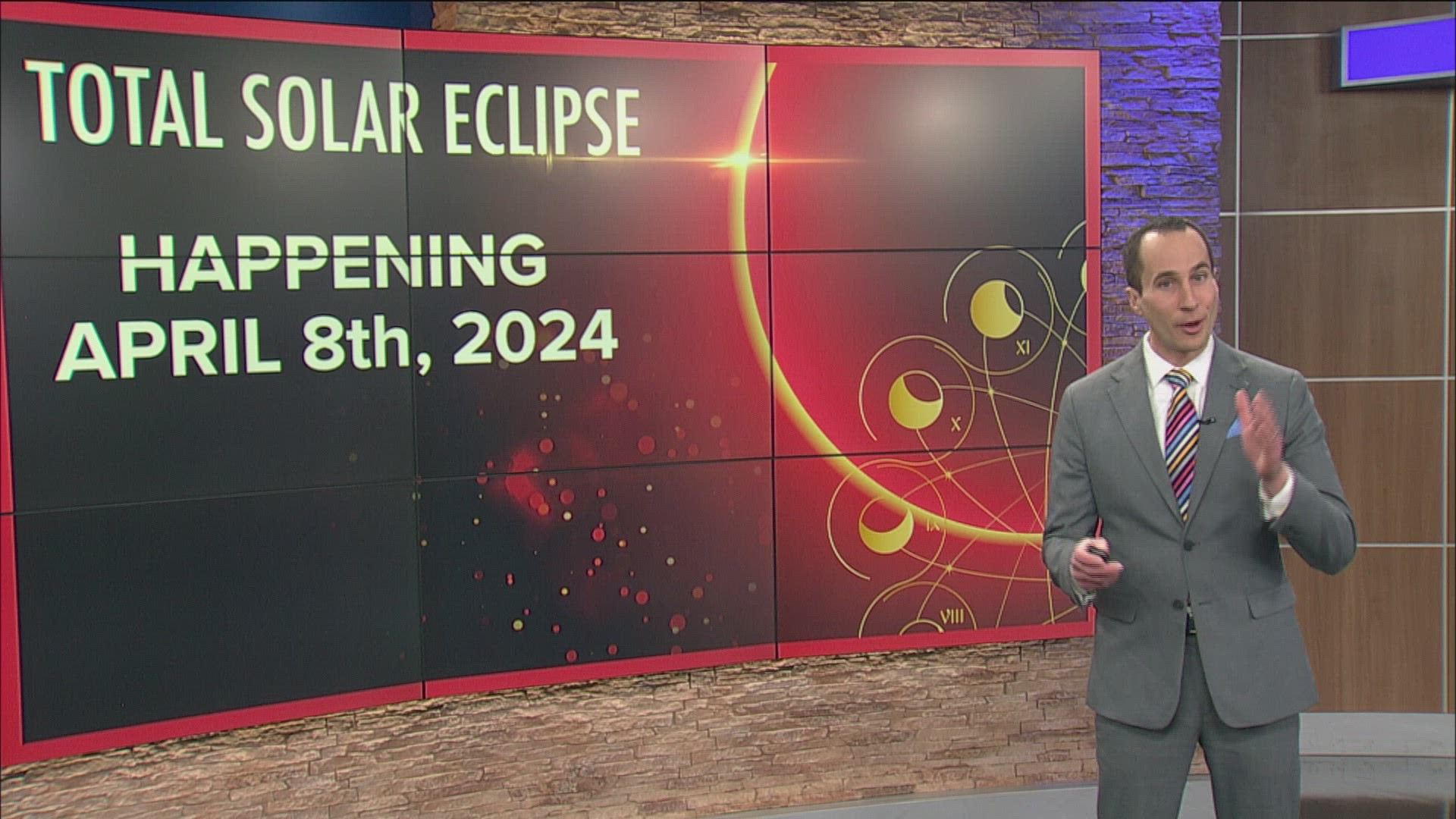TOLEDO, Ohio — Mark it on the calendar: the biggest day of the year - perhaps the event of the decade - will happen on April 8. A total solar eclipse will cast the shadow of the moon on a narrow path across the Earth with the direct path of totality across northern Ohio.
What is the Total Solar Eclipse?
A total solar eclipse occurs when the moon passes between the sun and Earth, completely blocking the face of the sun. Since the Earth and the moon are moving, the path of totality moves across our planet at around 1,400 miles per hour.

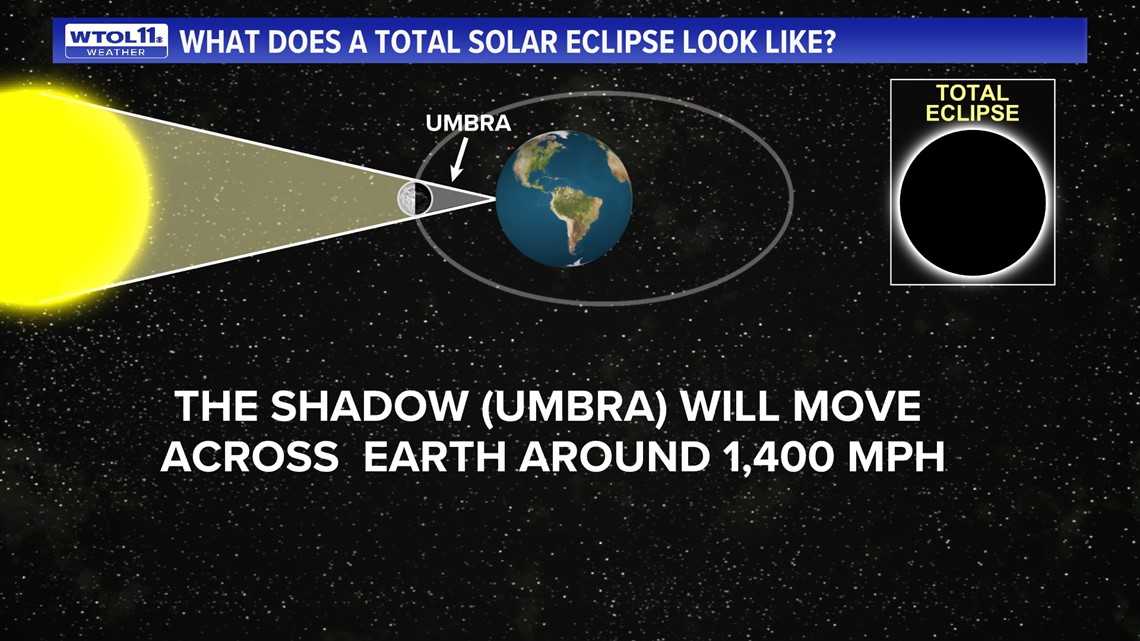
During a solar eclipse, the sky will darken as if it were dawn or dusk. At the moment of totality you will be able to gaze at the fully eclipsed sun for a once-in-a-lifetime view of the solar corona.
The last total solar eclipse in the contiguous United States happened on Aug. 21, 2017. It was visible in a narrow track spanning across the United States. This phenomenon sent tens of millions of Americans flocking to the path of totality that stretched from the west to east coasts. In much of Ohio, this event was witnessed as a partial eclipse.
Although the 2017 solar eclipse provided an interesting spectacle for Ohioans, it will pale in comparison to the eclipse visible from our area in April. Here's what you need to know to be prepared for this rare event.
How does a solar eclipse occur?
A total solar eclipse happens when the moon passes between the sun and Earth, completely blocking the face of the sun as it is visible from Earth. The inner black circle, the umbra, is where the shadow is complete: a total eclipse of the sun.

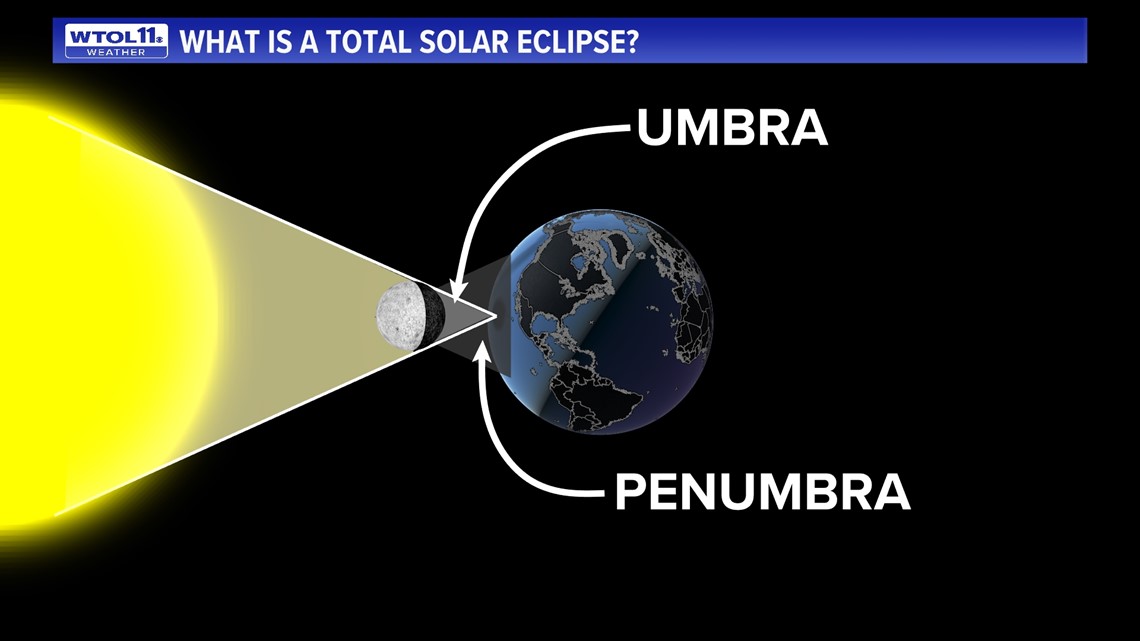
The width of this shadow on the face of the Earth is very narrow, only about 112 miles wide as it passes directly over northern Ohio. The outer shadow circle, the penumbra, shows the extent of the partial eclipse.
The partial eclipse will be slight near the outer circle and deep near the path of totality. In a deep partial eclipse, the sky will cool and sunlight will take on an eerie quality. For the full effect, you must get inside the path of totality. 99% is not the same as 100%.
Here are some important terms astronomers use when talking about a solar eclipse.

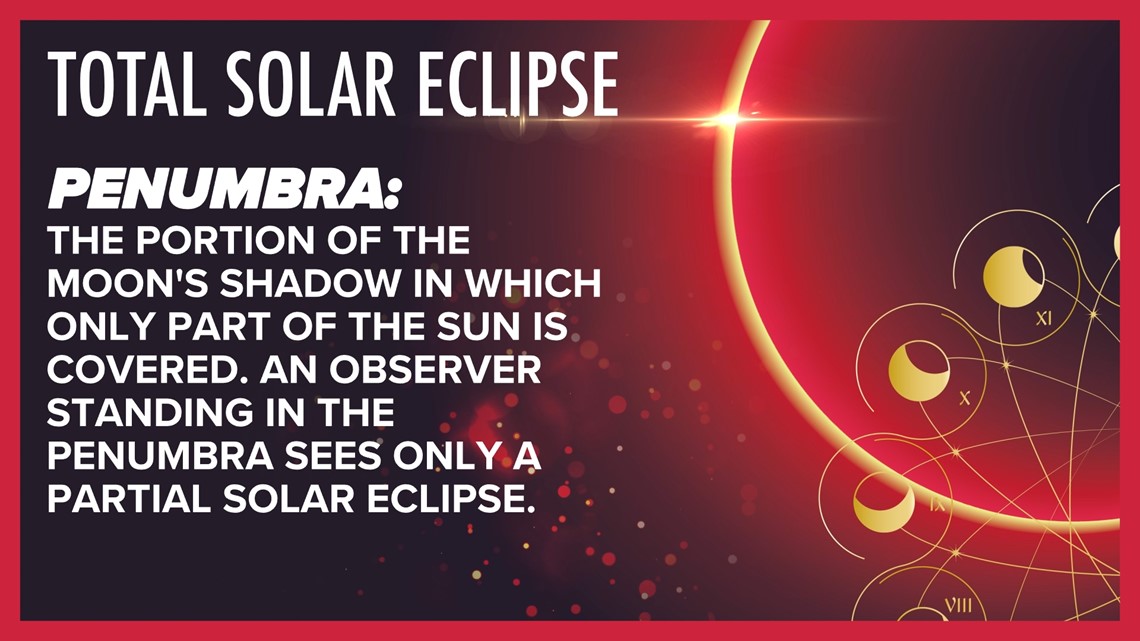
Penumbra: The portion of the moon's shadow in which only part of the sun is covered. An observer standing in the penumbra sees only a partial solar eclipse.

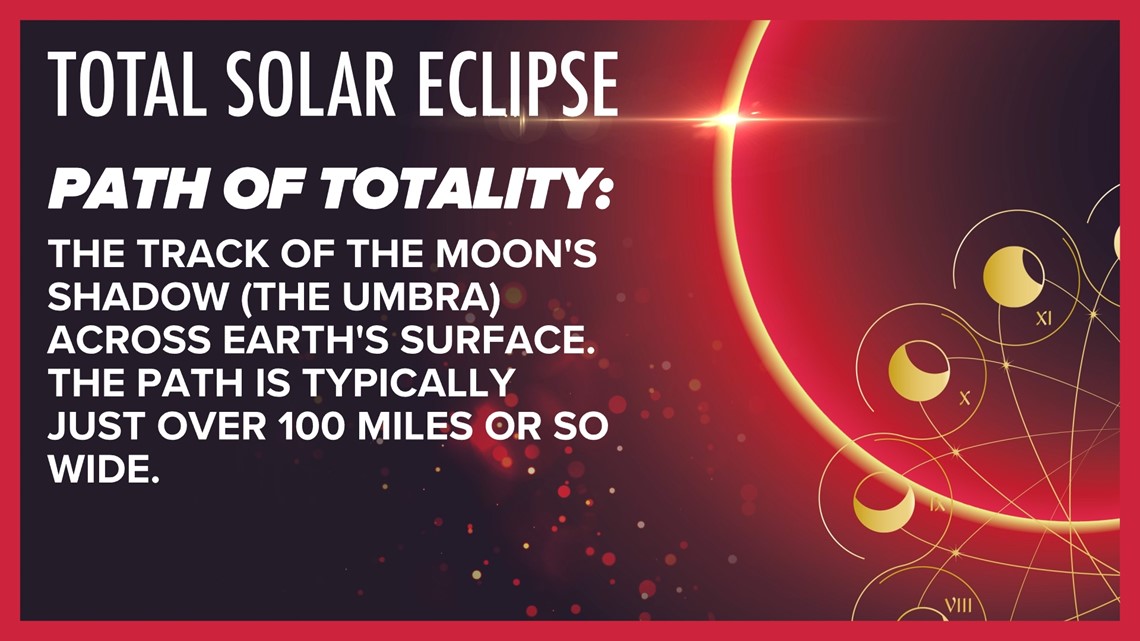
Path of Totality: The track of the moon's shadow (the umbra) across Earth's surface is called the path of totality. This path is typically only just over 100 miles or so wide. In order to see the sun totally eclipsed by the moon you must be in the path of totality.

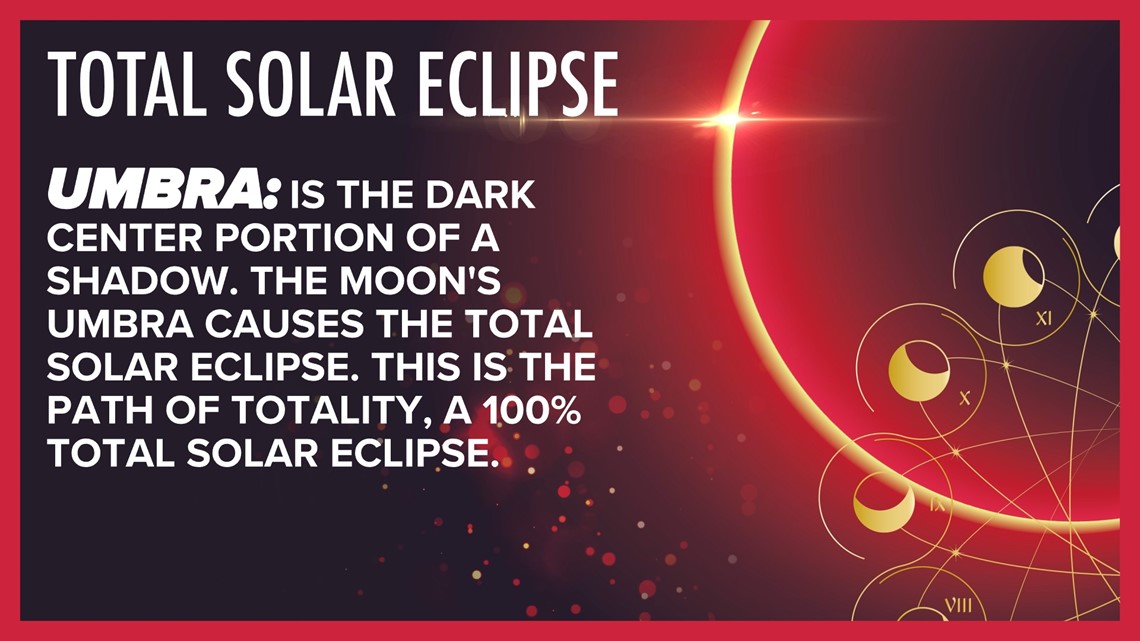
Umbra: is the dark center portion of a shadow. The moon's umbra causes total solar eclipses. This is the path of totality, a 100% total solar eclipse.

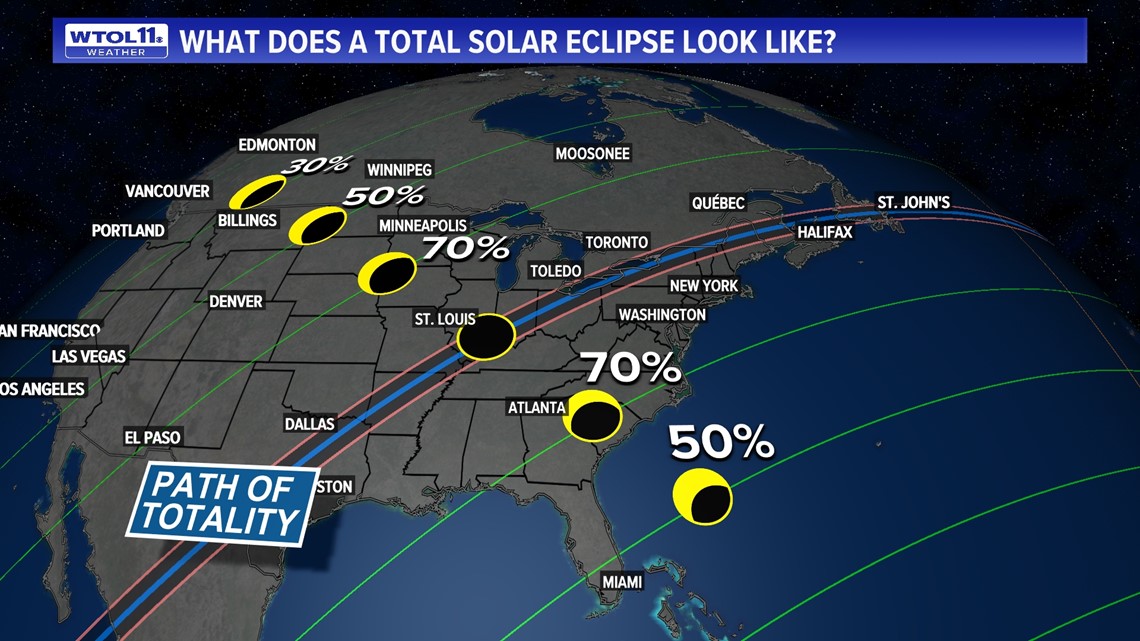
What is the sun's corona?
IMPORTANT: You will only see the corona when you are at 100% eclipse; inside the path of totality.
Within the path of totality, this is the only opportunity to view the sun’s corona. It is the outermost part of the sun’s atmosphere. It is composed mainly of plasma, which is hot ionized gasses.

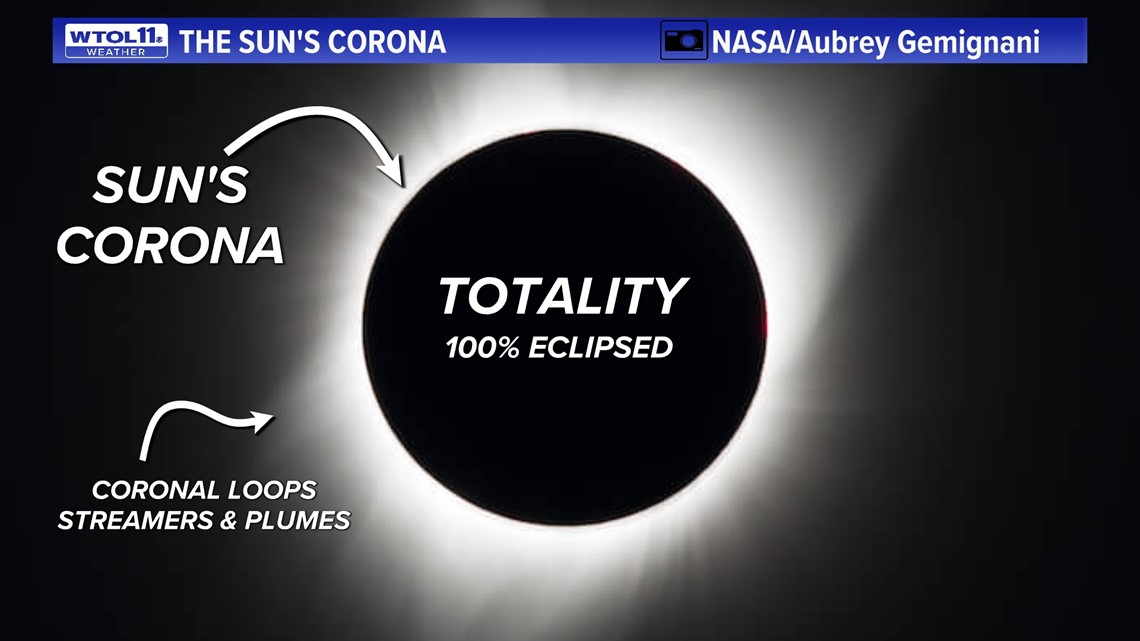
The corona is usually hidden by the bright light of the sun's surface. That makes it impossible to see without using special instruments and filters. During the total solar eclipse, the few short minutes of totality is the only time the corona is uniquely visible and can be seen with the naked eye. This is the moment the moon is completely blocking the direct rays of the sun, revealing the solar corona.

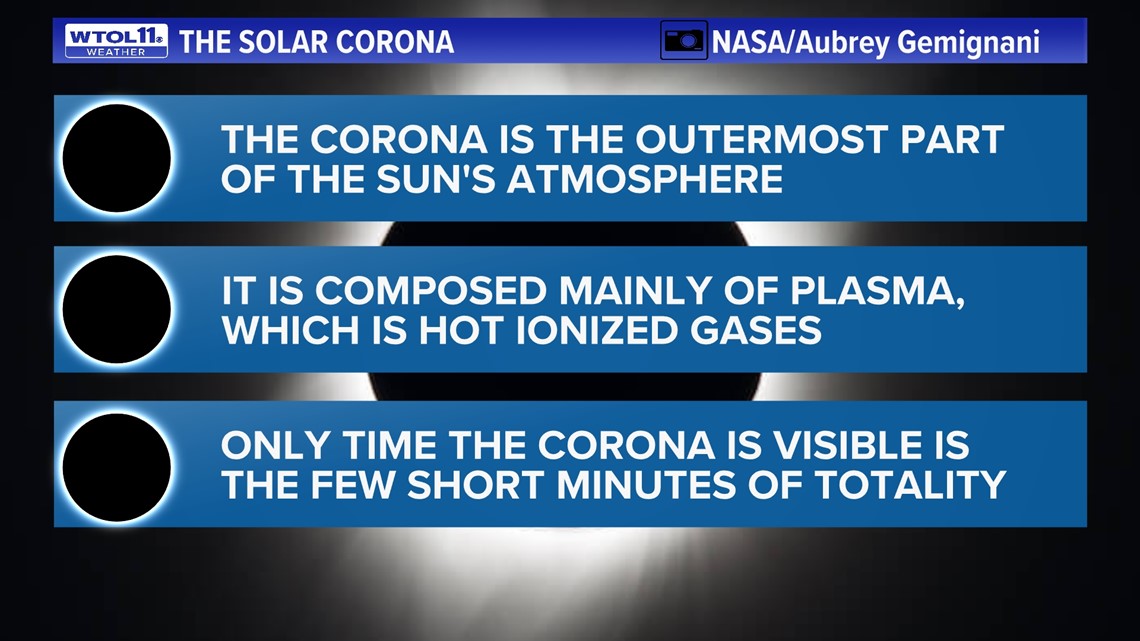
CAUTION: Remember to never look directly at the sun, even during a total solar eclipse without approved protective eyewear.

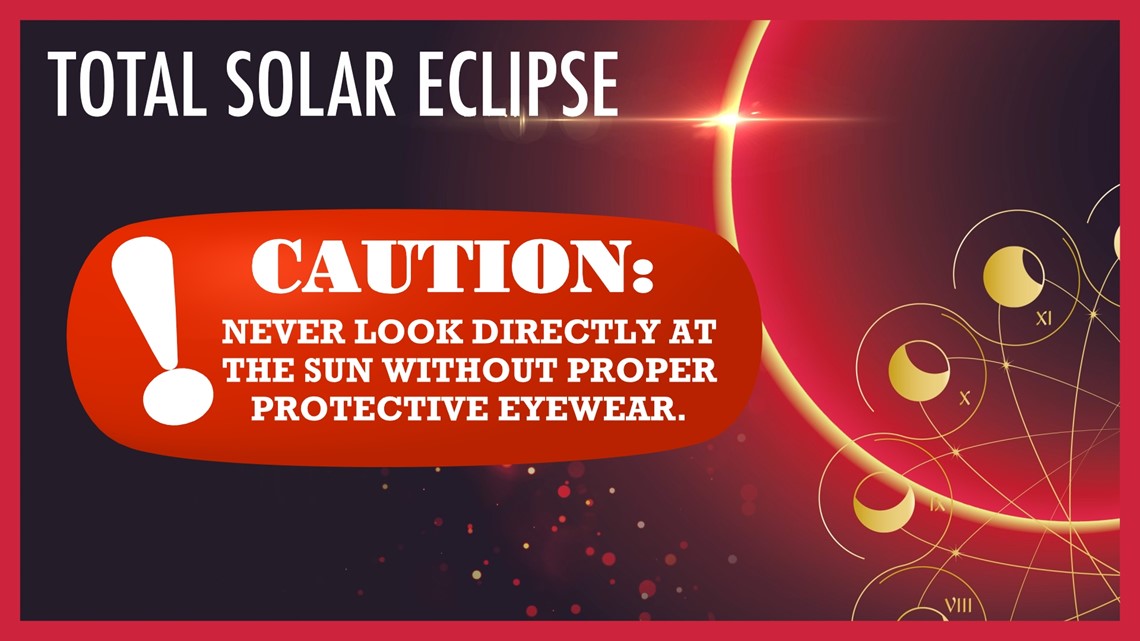
How long will the eclipse last in your area?
Here are the start and end times, maximum eclipse and time in totality for several areas in northwest Ohio. Look at the charts below to learn more about the total solar eclipse where you live.

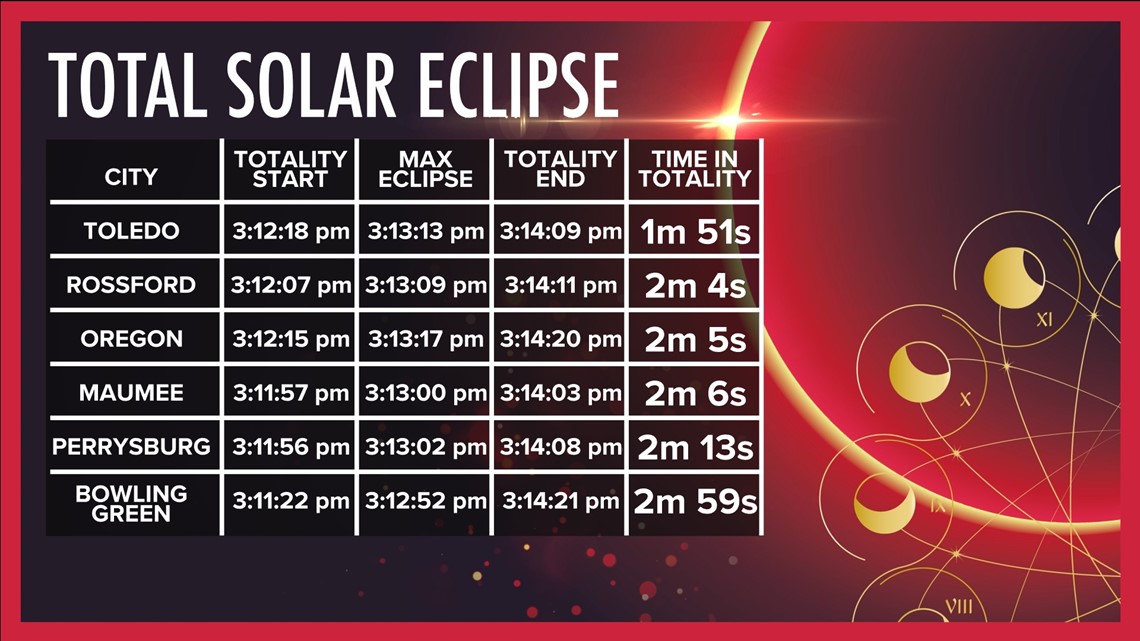

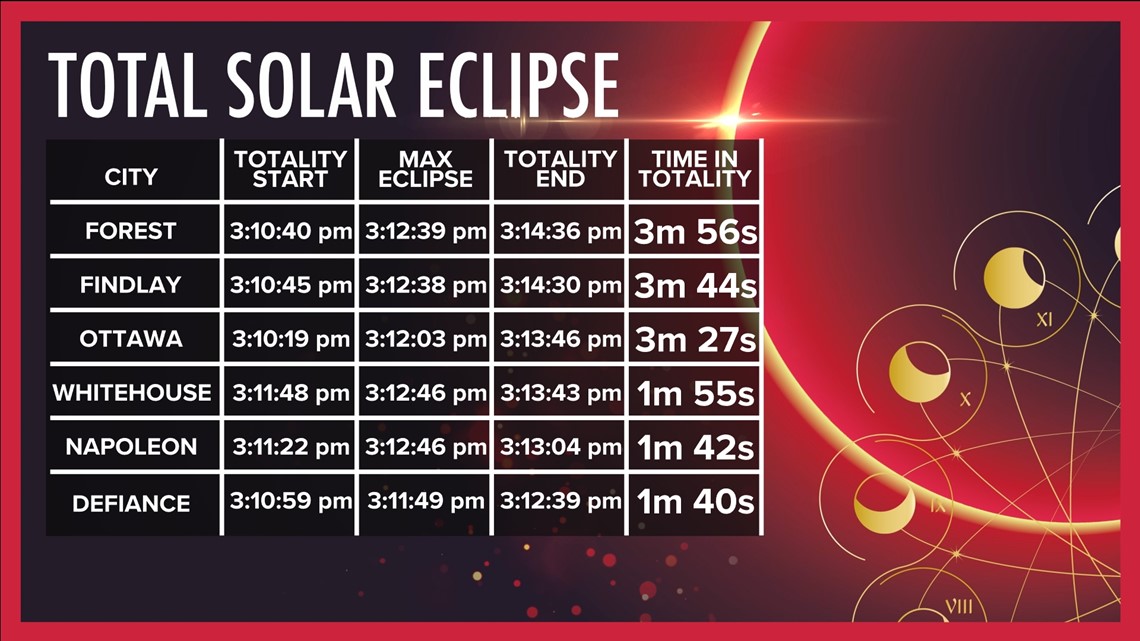


What does a total solar eclipse look like?
The few select minutes of totality will be a once in a lifetime experience. The sky will darken as if it were early dawn or late dusk. Star and planets may be visible. Most importantly, this time in totality will be your one and only chance to view the sun's corona. This is just one of many reasons to get excited for April 8.

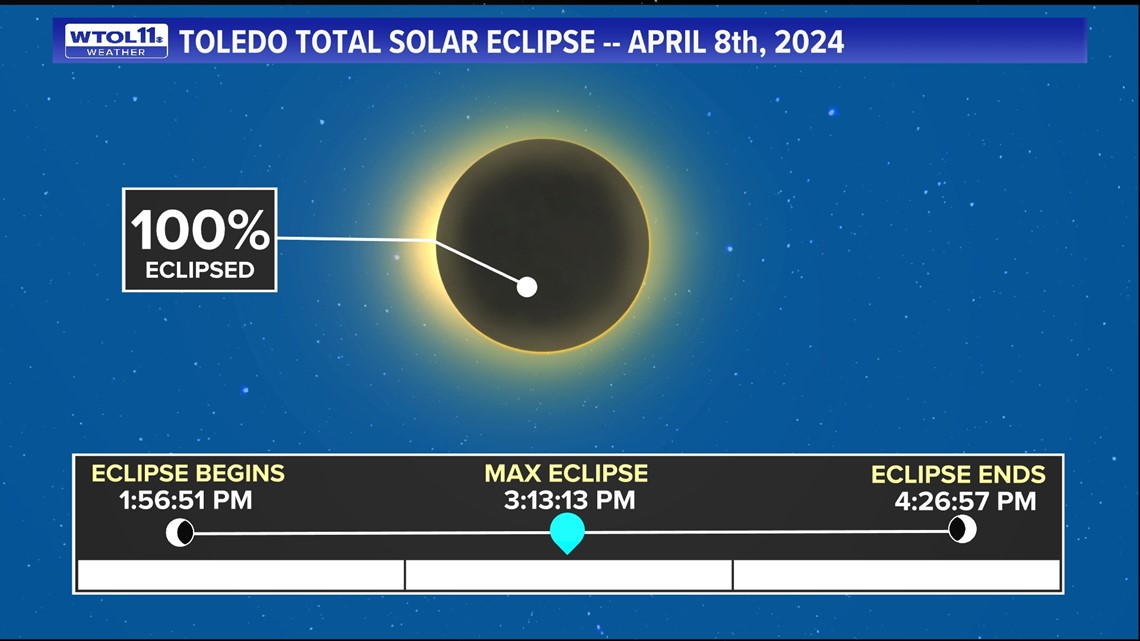
We have many more resources that will guide you through understanding what to expect during the total solar eclipse, safety and keeping you prepared for what could be the experience of a lifetime.
MORE 2024 TOTAL SOLAR ECLIPSE COVERAGE FROM WTOL 11

